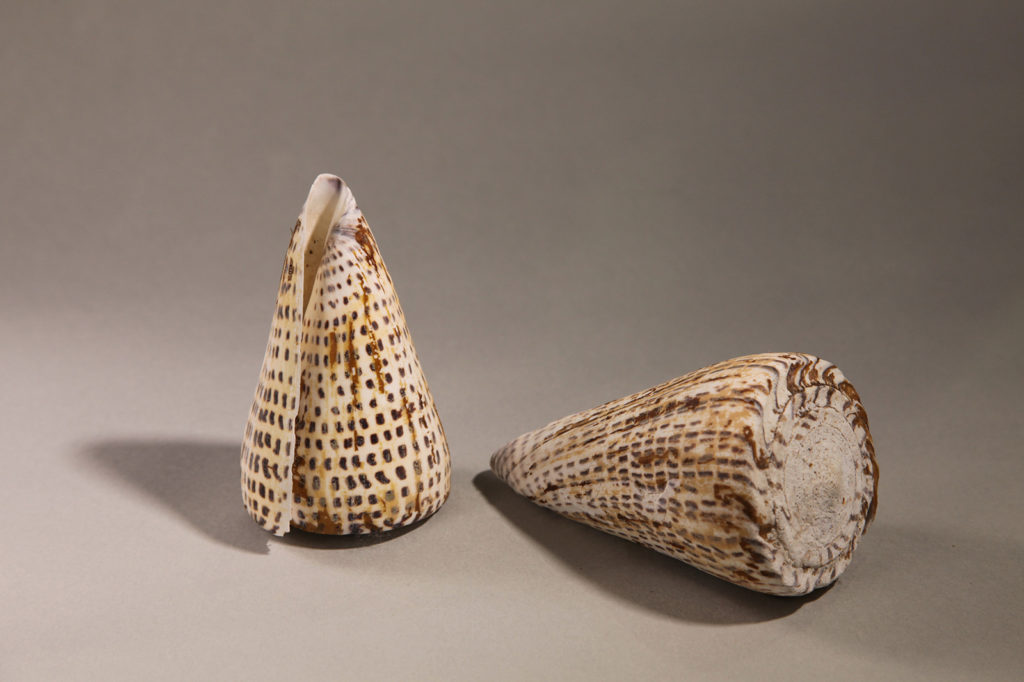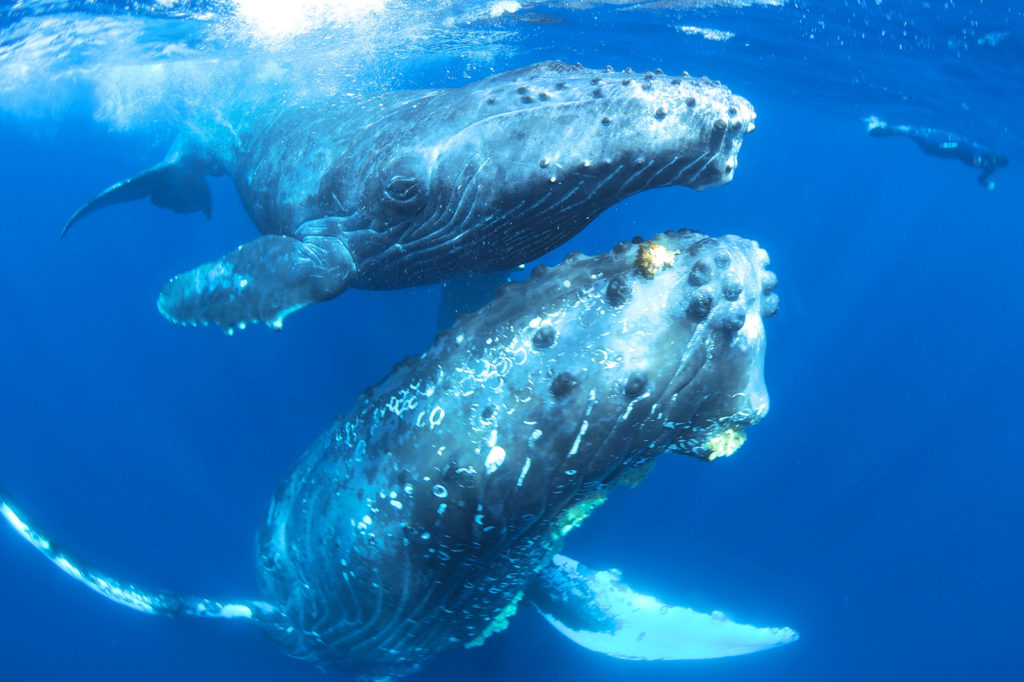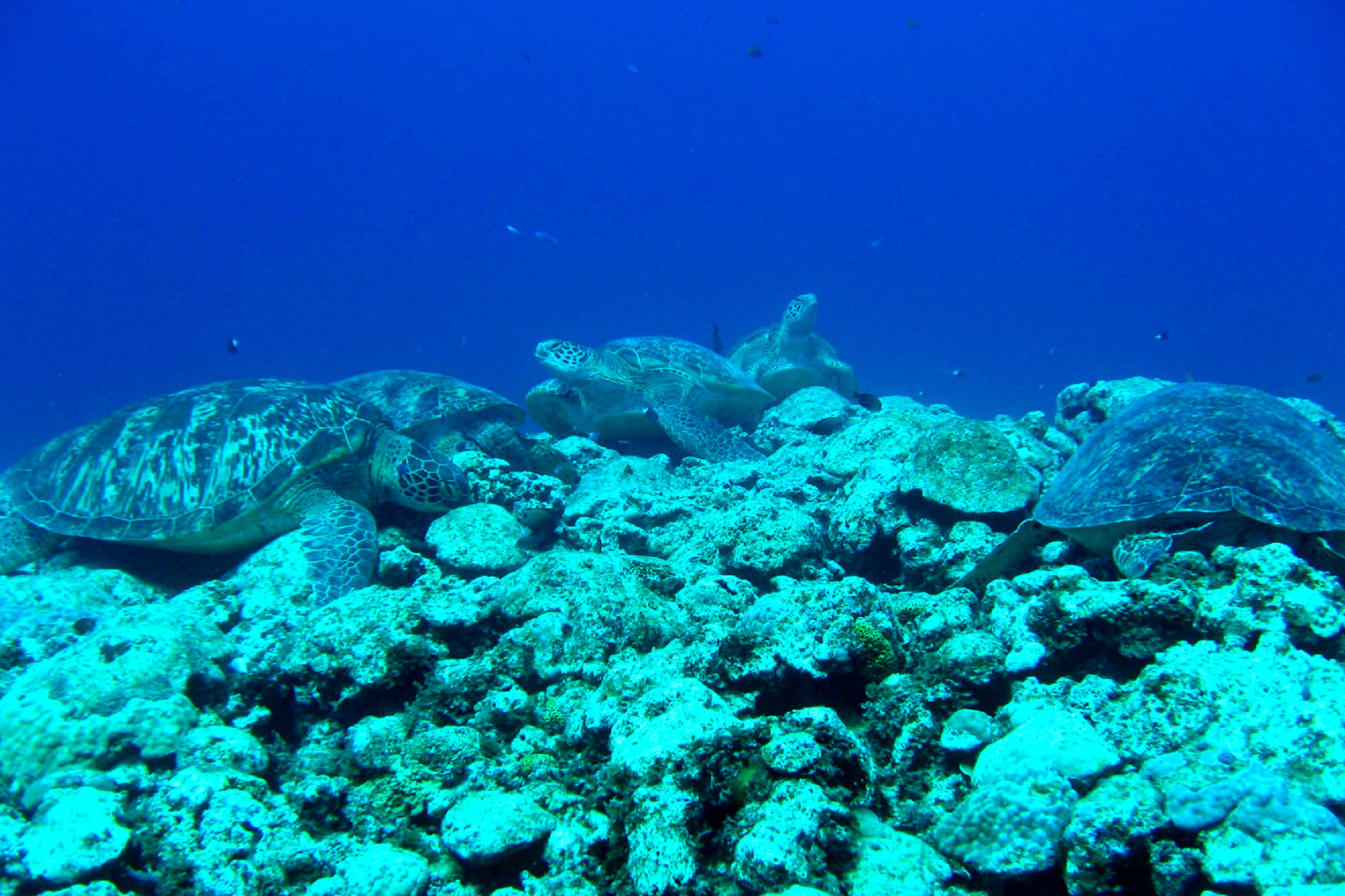
Amami's Sea Creatures
Sea Turtles on Amami Islands
In recent years, sea turtle snorkeling has become more popular along the coast of the Amami Islands as the number of young sea turtles increases and the snorkelers can watch them casually grazing on sea grasses and taking a nap among the coral.
The sea turtles that lay eggs on the Amami Islands are mainly loggerhead sea turtles and green sea turtles. The hawksbill turtle rarely lays eggs in Amami Oshima, but it does hold the only record of egg-laying by a leatherback turtle in Japan in 2002.
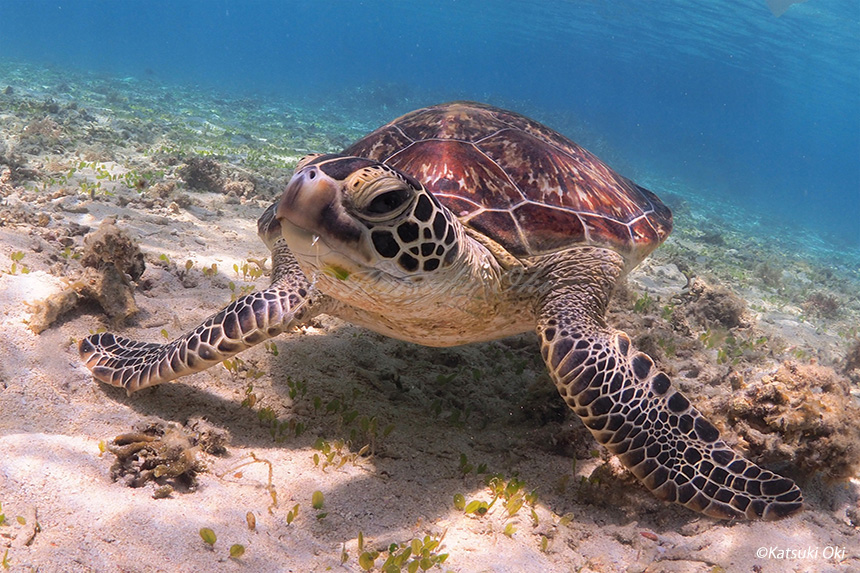
Green turtle (Photo / Kazuki Oki) Scientific name: Chelonia mydas
Widely distributed throughout the world’s oceans. The main egg-laying areas are scattered widely in tropical waters. The green turtle’s head and shell are dark green and black, and the belly is white and pale yellow. The shields on a young turtle’s shell make a sunrise design. Seaweed and sea grass are the animal’s main foods but it also eats jellyfish and salpa. It has a small head, and is the young green sea turtle often seen on t-shirts. When it lands, the turtle moves its front legs to the left and to the right at the same time, creating symmetrical, short footprints. When a green turtle is landing, observers must avoid using red lights and watch it from afar until it lays eggs because green turtle mothers tend to be nervous.
Only Miyagi Prefecture in Honshu and the areas from Niigata Prefecture southward to the Southwestern Islands do loggerhead sea turtles who live in the North Pacific lay eggs. The number of egg-layings is particularly high in Kagoshima Prefecture, accounting for 60 to 70 percent of all eggs lain in Japan. Yakushima and Tanegashima islands see the most, while every island of the Amami Islands are also locations where sea turtles lay eggs. The hatched loggerhead turtles cross the Pacific Ocean and return to Japan after they grow along the coast of Mexico. It has been found that the breeding ground at Amami Oshima is the main provider of crustaceans and shellfish for the turtles to eat in the middle of the East China Sea.
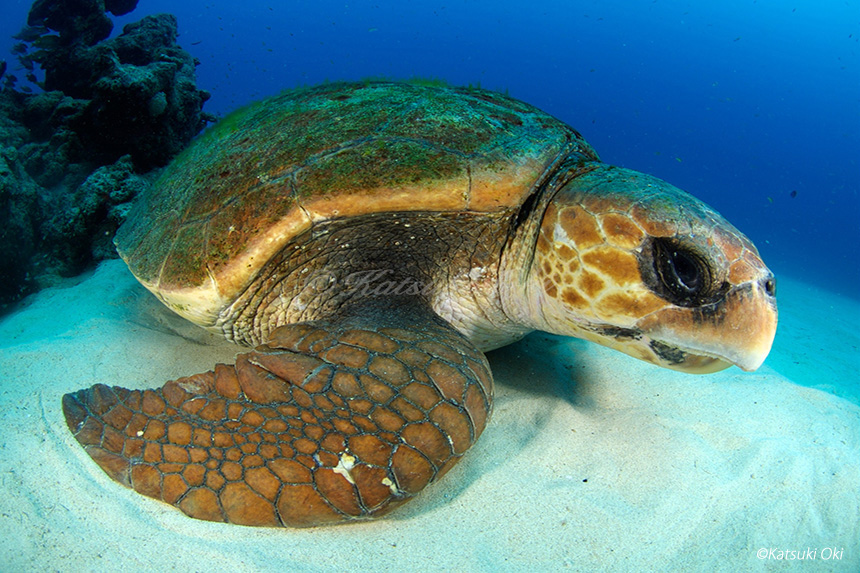
Loggerhead turtle (Photo / Kazuki Oki) Scientific name: Caretta careta
Widely distributed throughout the world’s oceans. The only laying place in the North Pacific is the Japanese coast. The head and shell are brown and the belly is pale yellow. The chin is developed to eat crustaceans and shellfish, and the head is large. The loggerhead turtle looks like a monster with a grotesque appearance when compared to a green turtle. When landing, the feet move alternately left and right and make the footprints asymmetrical. During the breeding season, mother turtles rest on the seabed of the shore where they lay eggs and long-tailed males come to mate. It is recommended that observers use red light to view turtles landing or laying eggs.
Research has revealed that the northern limit of the green turtles’ egg-laying area is mainly located south of Yakushima, Tanegashima and Ogasawara Islands, and that those turtles that use the Amami Oshima breeding place are eating seaweed and sea grasses on the coast of Kyushu, Honshu and Izu Islands. Both species spend their days on the coast of the Amami Islands during the breeding season from May to July. There are about 2,000 confirmed egg-layings throughout all the Amami Islands during heavy laying years, which is 10% of all eggs laid in Japan in spite of more or less egg-producing times each year. In the past, loggerhead turtles were born from about 60 percent of the eggs, but over the past few years the number of eggs has reduced, and the green turtles are becoming the dominant species.
Loggerhead sea turtles lay eggs in temperate and subtropical waters and green sea turtles lay in subtropical and tropical areas. Amami Islands are also a valuable area because both species of egg-laying waters meet.
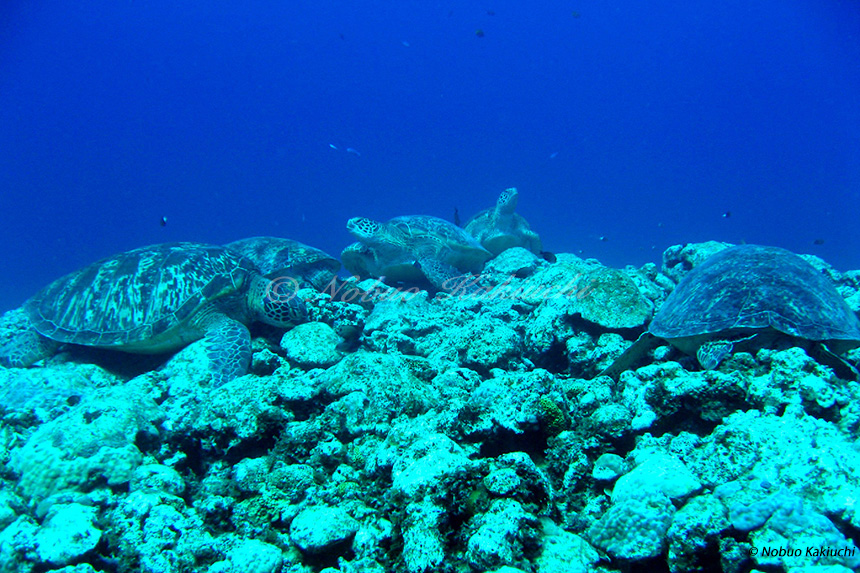
Green turtle resting spot on Yoronjima’s reef (Photo / Nobuo Kakiuchi)
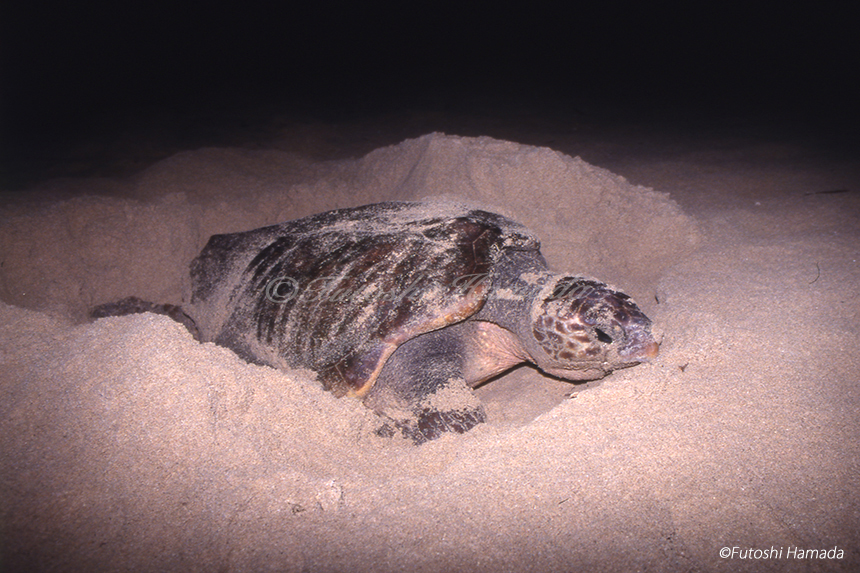
Loggerhead laying eggs (Photo / Futoshi Hamada)
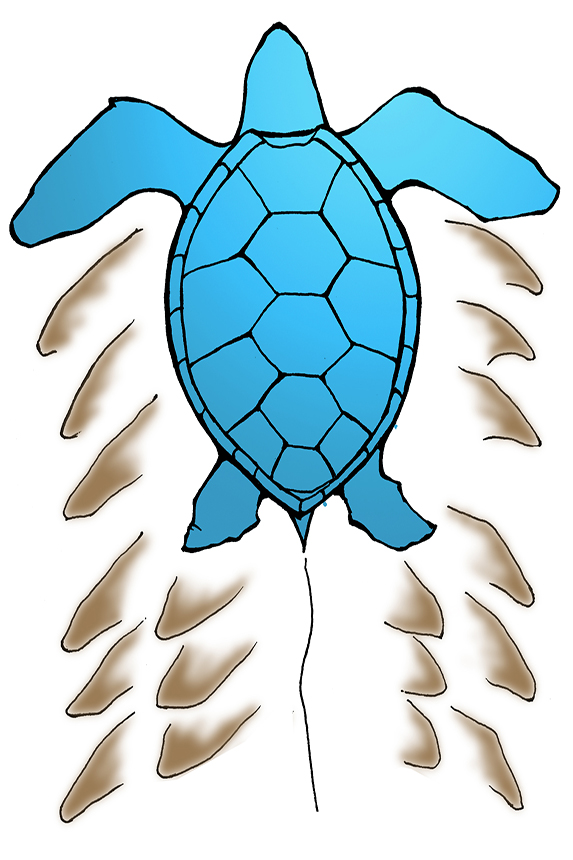
Green turtle

Loggerhead turtle
Illustrations / Katsuki Oya


